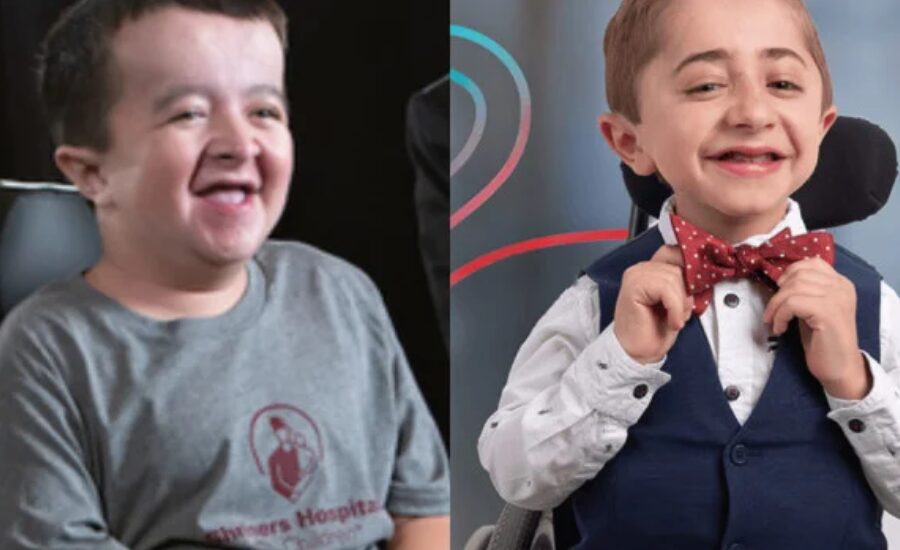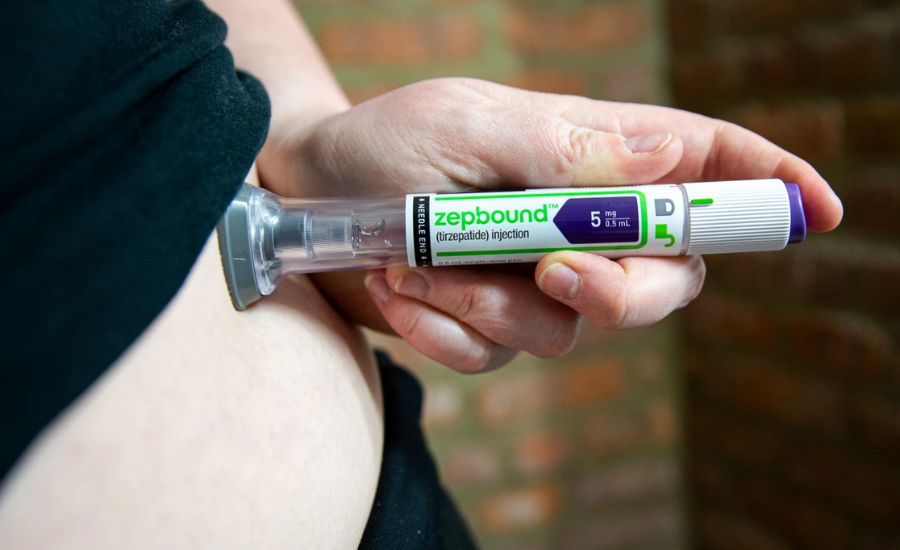Introduction To Do alec and kaleb get paid for commercials
Alec and Kaleb have won over countless fans with their adorable, heartfelt performances, but there’s more to their journey than just natural talent and charm. These two young stars are part of the bustling world of child actors, where kids often shine in commercials that stick with us long after they air. But have you ever stopped to think about what really goes on behind those catchy ads?
Do Alec and Kaleb actually get paid for their commercial work? The simple answer is—yes, they do. Like most child actors, they’re compensated for their time, effort, and the joy they bring to audiences. But the world of commercial endorsements isn’t just about paychecks; it’s a mix of legal protections, industry standards, and ensuring that young performers are treated fairly both on and off the set.
Behind the scenes, there’s a lot happening to make sure everything runs smoothly. From labor laws that regulate working hours for kids to special accounts (often called Coogan accounts) where a portion of their earnings is set aside for their future, there are systems in place to protect young actors. Plus, when it comes to commercials, things like residuals—payments for reruns or continued use of their ads—can mean ongoing income long after the cameras stop rolling.
So, while Alec and Kaleb’s charm and talent are front and center in every ad, their work is backed by an industry that’s designed to support and safeguard young performers. It’s not just about making commercials—it’s about building a career while still being a kid.
Do Alec and Kaleb Get Paid for Commercials?
The issue of whether Alec and Kaleb receive payment for their roles in Shriners Hospitals for Children ads raises broader concerns regarding the compensation of those involved in charity advertising. Actors, especially those that appear in non-profit campaigns, are frequently compensated in the advertising industry.
This recompense can take many different forms. Depending on the company and the type of work, it could be monetary or take various forms. The primary objective of these advertisements for nonprofit organizations such as Shriners Hospitals for Children is to increase public awareness and solicit donations to further their purpose.
Although payment for the time and contributions of child ambassadors and other participants is common, the specifics of these agreements are typically kept confidential. This is done with consideration for the people concerned as well as the organization’s emphasis on its philanthropic endeavors. The cause these ads are promoting, not the backstage financial details, is ultimately what makes them compelling.
The world of child actors and commercial endorsements

Child acting is a fascinating and difficult field. Many young people aspire to be the faces of advertisements for goods that appeal to their demographic. These possibilities can change people’s lives and open doors for some.
In addition to giving young performers visibility, commercials instill in them important values of professionalism and accountability at a young age. But the sector is not all sunshine and roses; there is fierce rivalry, and getting a job can be difficult.
In this process, parents are essential because they provide direction during auditions, contract negotiations, and making sure their kids remain grounded. Striking a balance between letting children have a typical upbringing and pursuing acting goals is crucial.
They have their own set of difficulties, even though the cash gains can be significant. A strong support network, which includes family and financial experts, is frequently necessary for responsible earnings management.
Beyond the monetary and professional benefits, kid acting fosters confidence and inventiveness. Working on set fosters cooperation and teamwork, which are lifelong skills that help kids succeed in any endeavor, whether they decide to pursue a career in entertainment or not.
Public Perception of Alec and Kaleb’s Participation

The success of humanitarian efforts is greatly influenced by public opinion, and Alec and Kaleb have won over many hearts with their bravery and genuineness. In addition to highlighting the hospital’s amazing work, their personal stories in Shriners Hospitals for Children commercials have raised awareness of the situations they live in and encouraged empathy and understanding in viewers.
Many people consider Alec and Kaleb to be heroes rather than merely the faces of a campaign. Numerous people have been inspired by their readiness to publicly discuss their challenges and victories, demonstrating that vulnerability can be strength. The public clearly appreciates their contributions, regardless of whether they are paid for them. Their testimonies have struck a deep chord, leaving a lasting impression and contributing to the development of a sympathetic and upbeat perception of Shriners Hospitals for Children.
How do child actors get paid for commercials?
Commercials frequently compensate child performers using a multi-part, structured payment method. First is base pay, which is determined by the child’s experience, brand size, and if the commercial is intended for a local or national audience. This can cost anywhere from a few hundred to several thousand dollars for novices.
Child actors may receive residuals, which are additional payments that are made when the advertisement airs repeatedly or is viewed in multiple locations, in addition to their initial income. This implies that they can make money even after the filming is finished.
Contracts are essential to this procedure because they specify the terms of payment and the company’s control over the child’s performance. A thorough comprehension of these contracts guarantees that young performers receive just compensation and protection for their labor.
The Impact of Alec and Kaleb’s Commercials on Shriners Hospitals
There is no denying the impact of Alec and Kaleb’s participation in Shriners Hospitals for Children advertisements. Their touching tales have brought the hospital a lot of attention and helped raise millions of dollars in donations that are necessary to maintain its operations.
The sincere bond that Alec and Kaleb build with viewers is what makes these ads so powerful. Their bravery and genuineness strike a deep chord, enabling Shriners Hospitals to emotionally and powerfully captivate audiences.
Alec and Kaleb’s inspirational tales of perseverance and hope have inspired countless others to support the hospital’s cause. In addition to increasing donations, their appearance in these advertisements has increased public awareness of the important work Shriners Hospitals undertakes, transforming the organization into a beacon of hope for kids dealing with difficult medical issues.
The role of parents and guardians in managing their earnings
When it comes to handling the emotional and financial facets of child actors’ careers, like Alec and Kaleb’s, parents and guardians are essential. They frequently take on the role of managers, assisting their kids in negotiating contracts and making sure that everything is in their best interests.
A thorough understanding of payment arrangements is crucial for guardians. In addition to obtaining proper remuneration up front, they also need to take into consideration any applicable royalties and residuals from ongoing ads.
Protecting profits is also another crucial duty. In order to guarantee that their children’s income is secure and accessible when they become adults, many parents choose to establish trust funds or special savings accounts.
However, emotional assistance is just as crucial as financial help. For young actors navigating their professions and personal development, having a trusted adult to offer direction and confidence is crucial because the entertainment industry can be unexpected and stressful.
Exploring the Non-Profit Advertising Landscape
Nonprofit groups, such as Shriners Hospitals for Children, operate in a distinct advertising market since they prioritize promoting a cause above a product. In this context, commercial actors symbolize the organization’s values and mission in addition to performing.
The impact of this kind of promotion is exemplified by Alec and Kaleb. Their individual experiences give the message a genuineness that audiences find very moving, which increases its relatability and sincerity. Making an emotional connection is crucial in non-profit advertising. These campaigns frequently depict people who genuinely care about the cause they are supporting, in contrast to traditional advertisements where payments are only transactional.
Building audience trust with genuineness is crucial to promoting support and donations. The value of authentic storytelling in the non-profit sector is demonstrated by Alec and Kaleb’s appearances in Shriners Hospitals for Children ads, which highlight how sharing personal, authentic experiences may motivate others to take action.
The impact of child labor laws on payment for commercials
The way that child actors are paid for their work in advertisements is greatly influenced by child labor laws. These rules are in place to safeguard children from exploitation and guarantee that they receive just compensation for their labor and time.
There are stringent regulations in many areas regarding the number of hours and working conditions that minors are permitted to work. Their earning potential is directly impacted by this. For instance, a few of states mandate that a child’s earnings be placed in a trust fund, sometimes referred to as a Coogan account, which the child can access as an adult.
These rules also mandate that parents or guardians supervise financial decisions and contracts, guaranteeing that young actors receive fair compensation and are taught responsible money management techniques. Children like Alec and Kaleb will profit monetarily and emotionally from their early experiences in the sector thanks to this legislative regulation, which acts as a safety net.
Families navigating the entertainment industry must be aware of these legal protections as the demand for young talent in advertising increases. It guarantees that children are protected for the future even while they take advantage of the opportunities that come with performing.
Common Practices in Commercial Actor Compensation
Depending on the kind of commercial, the role they play, and the company making the commercial, actors’ and participants’ pay can vary significantly in the advertising industry. For-profit businesses typically pay for time spent on set, receive residuals for recurring appearances, and occasionally give other benefits.
The pay policy may be somewhat different for non-profits such as Shriners Hospitals for Children. Due to a personal connection to the cause, some individuals may choose to volunteer their time, while others may earn monetary compensation.
Alec and Kaleb, two kid ambassadors who have both been Shriners patients, frequently get involved because they genuinely want to give back to the institution that has been so important in their lives. Their contributions are crucial to the organization’s efforts to increase support and awareness for its mission, regardless of whether they get financial compensation.
Challenges faced by child actors in the industry and how they overcome them
In their careers, child performers like Alec and Kaleb frequently encounter a variety of particular difficulties. Their self-esteem and mental health may suffer as a result of the intense pressure to constantly give excellent performances. Their lives are further complicated by juggling friendships, studies, and the demanding schedules of filming and auditions.
The possibility of exploitation is a significant worry in this sector. Parents or guardians must act as advocates to safeguard the rights of young actors, who might not fully understand fair industry procedures or the specifics of contracts.
Another major obstacle is competition. Since many kids are competing for the same parts, young actors must learn to be resilient and flexible in order to deal with both rejection and success. Making contacts through networking also becomes a crucial ability as they move through the entertainment industry.
Strong support networks are crucial for overcoming these obstacles. While professional mentors can provide invaluable advice on how to manage the duties and expectations that come with being in the spotlight, family support offers stability and keeps life grounded.
Facts:
- Compensation for Alec and Kaleb:
Alec and Kaleb, featured in Shriners Hospitals for Children commercials, are compensated for their work, like most child actors. Their payment can include base pay and residuals for repeated airings. - Non-Profit Advertising:
Non-profit organizations like Shriners Hospitals for Children use personal stories to build emotional connections with audiences. While compensation practices may vary, participants often have strong ties to the cause. - Legal Protections:
Child labor laws regulate working conditions and ensure child actors receive fair compensation. In many cases, part of their earnings is secured in Coogan accounts until adulthood. - Role of Parents/Guardians:
Parents and guardians play a vital role in managing contracts, ensuring fair compensation, and providing emotional support. They often set up trust funds to secure future financial stability for their children. - Impact of Alec and Kaleb’s Commercials:
Their heartfelt stories have significantly increased donations and awareness for Shriners Hospitals, making the commercials emotionally resonant and effective in fundraising. - Challenges for Child Actors:
Child actors face pressures related to performance, competition, and balancing school with work. Risks of exploitation make it important for trusted adults to oversee their careers.
Summary:
Alec and Kaleb, the young faces of Shriners Hospitals for Children commercials, are compensated for their appearances, following industry practices that include base pay and potential residuals. While non-profit advertising focuses on promoting a cause rather than products, compensation varies depending on the participant’s connection to the organization. Child labor laws ensure young actors are treated fairly, often requiring earnings to be secured in trust accounts like Coogan accounts until adulthood.
Parents and guardians play a crucial role, managing contracts, overseeing finances, and providing emotional support to balance the demands of acting with a normal childhood. Alec and Kaleb’s authentic stories have had a profound impact on Shriners Hospitals, boosting donations and raising awareness for the hospital’s mission. However, like many child actors, they face unique challenges, including industry competition, performance pressure, and the need for strong support networks to navigate the entertainment world successfully.
FAQs:
- Do Alec and Kaleb get paid for their commercials?
Yes, Alec and Kaleb are compensated for their appearances in Shriners Hospitals for Children commercials. Their earnings may include base pay and residuals for repeated airings. - How do child actors like Alec and Kaleb get paid?
Child actors are typically paid a base fee for their work, with potential residual payments if the commercial airs multiple times. Some earnings are often placed in trust accounts (like Coogan accounts) until they reach adulthood. - Are child actors in non-profit commercials compensated differently?
Yes, compensation in non-profit advertising can differ. While some participants may receive payment, others volunteer due to a personal connection to the cause. - What role do parents play in managing child actors’ earnings?
Parents and guardians manage contracts, ensure fair pay, and set up trust funds to secure their child’s earnings. They also provide crucial emotional support. - How do child labor laws affect child actors?
Child labor laws protect young performers by limiting their working hours and ensuring fair compensation. In many places, laws require a portion of a child actor’s earnings to be set aside in trust accounts. - What challenges do child actors face in the industry?
Child actors deal with performance pressure, competition for roles, and balancing school with work. There’s also a risk of exploitation, making parental guidance essential. - How have Alec and Kaleb’s commercials impacted Shriners Hospitals for Children?
Their commercials have significantly raised awareness and boosted donations, highlighting the hospital’s mission and the resilience of its young patients. - What are Coogan accounts?
Coogan accounts are special trust funds where a portion of a child actor’s earnings is legally required to be deposited, protecting their finances until they reach adulthood.
Read More About Health At: Discovermindfully







